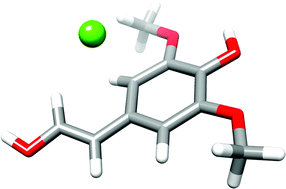Abstract
The strength of Bz—Cl˙ complexation has been explored using density functional theory (DFT) calculations, including dispersion-corrected (DFT-D) calculations. Of the methods tested, the ωB97X-D method seems the best performing, along with the previously tested MPW1K method. The effect of substituent (X = NO2, F, Cl, Br, H, CH3, OCH3, OH, NH2 and N(CH3)2) on the stabilities of the Ar—Cl˙ π-like intermediates show a good correlation with the linear free energy relationships used experimentally, but this is not the case for Ar—Cl˙ σ-complexes, suggesting the transition state of abstraction as being π-like in nature. The role of PAH and

- This article is part of the themed collection: Free Radical Chemistry special themed issue in memory of Athel Beckwith

 Please wait while we load your content...
Please wait while we load your content...